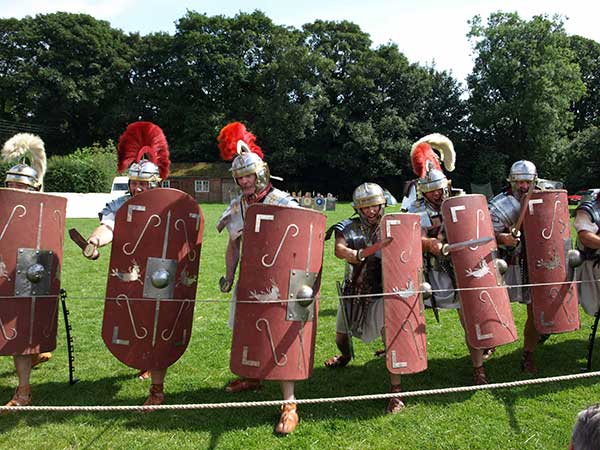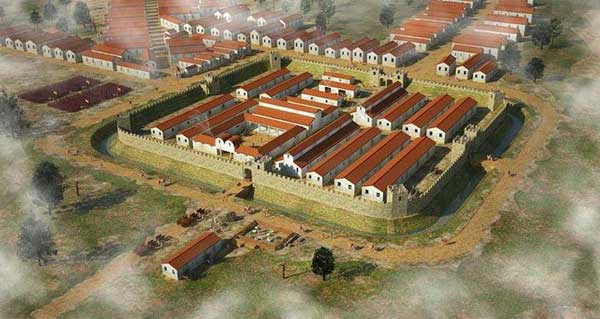- Quote: ‘The Spanish cavalry was replaced by a Samaritan cavalry troop from Eastern Europe’
By Andrew Atkinson
The Roman occupation of Ribchester in Lancashire is dated as starting in 76 AD with a Spanish cavalry unit which left at the beginning of the second century.
Some time later, towards the end of the second century, the Sarmatians arrived and created a new fort on the same site. Archaeologists spent five years excavating the site and learned an enormous amount, with many important finds.
The Roman fort at Ribchester (Bremetennacum Veteranorum) was established during the first phase of Roman occupation of Britain, some time in the early 70s AD.
The fort was built at a river crossing over the Ribble, at a point where Roman roads from Chester, York, and Carlisle converged.

This early fort was part of a network of similar forts across the north of Britain – manned by a troop of cavalry from Spain. It was a simple affair, constructed of turf and timber, but was rebuilt in stone sometime in the middle of the 1st century.
Later in that century, the Spanish cavalry was replaced by a Samaritan cavalry troop from Eastern Europe.
Initially, the Ribchester settlement was nothing but a cavalry fort, but over time a vicus, or civilian settlement, grew up around the military fort. The vicus grew to occupy a site roughly similar to the modern village.
By the late 1st century Ribchester became the administrative centre for the region with workshops, townhouses, shops, bath houses, and temples.

The heyday of Ribchester seems to have been the 2nd century, but the site was occupied well into the 4th century.
The most famous find at Ribchester was discovered accidentally in 1796 by a clogmaker’s son playing behind his house.
The boy unearthed the so-called Ribchester Horde, a cache of cavalry gear and other military metal items stashed in a wooden box beneath the floor of a barrack chamber.
The Horde was probably placed in the box about AD 120 and may represent the private belongings of a single soldier.
The most impressive item in the Ribchester Horde was a decorative vizor helmet, of a type worn in cavalry sporting events.
Part of the Ribchester Horde were eye-guards for a horse, pottery bowls, saddle plates, and a good-luck amulet made from a boar tusk, now at the British Museum in London.
The first proper excavations of Bremetennacum Veteranorum took place in the 19th century, and subsequent investigations have been carried out at regular intervals.
A museum to preserve and display items was opened in 1915 with the Ribchester Museum of Roman Antiquities, that includes objects found at the Roman fort and prehistoric objects discovered in the area.





